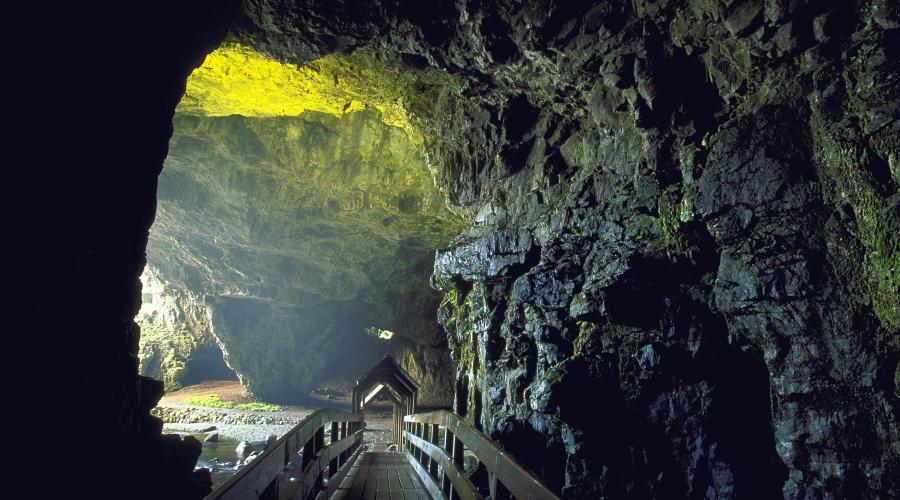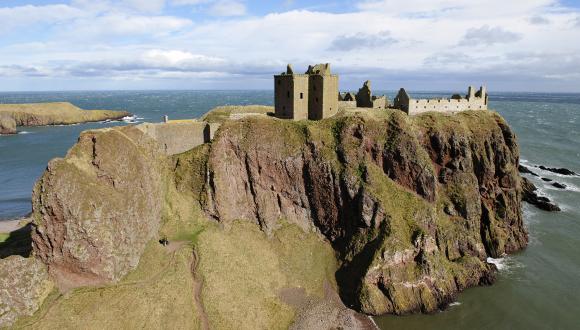
Caves and karst
Scotland has caves eroded by wave action and caves – and karst – formed by the dissolution of carbonate rock.
Wave action
Caves may be cut into any type of rock as wave action exploits local weaknesses, like fractures or faults. Such sea caves are found along ancient raised shorelines and were cut largely by waves when they lay at sea level. In many cases, this likely took place during and just after the ice melt of the last glaciation.
Well-known examples include:
- Fingal’s Cave on Staffa – cut into a columnar-jointed lava flow that is about 65 million years old
- King’s Cave on Arran – cut into ‘New Red Sandstone’ that is about 250 million years old
Carbonate caves
Caves can form when relatively acidic stream waters dissolve rocks that contain carbonate. Such rocks include:
- limestone
- dolomite (magnesium-rich limestone)
- marble (heated and compressed limestone)
Many cave passages in Scotland pre-date the last glaciation, which peaked around 22,000 years ago.
Some of our most impressive caves are formed in the Durness dolomite in Assynt. These include:
- caves in the Traligill and Allt nan Uamh valleys
- caves near Knockan and on the Achmore plateau
The Durness dolomite also extends both north and south of Assynt, from Smoo Cave to small caves near Loch Slapin on Skye and others around Kishorn. Glen Creran also has caves and limestone pavements.
Thin Jurassic limestones contain:
- small caves around Broadford on Skye
- the cave passages of Uamh nan Breagaire at Applecross
Small caves also occur in Dalradian marble:
- near Schiehallion
- at Uamh nan Uachdar, south of Glen Spean
No caves have been recorded in the Midland Valley’s limestones.
Karst
Karst is a distinctive landscape created by the erosion and dissolution of rocks containing carbonate, where the topography and landforms result from efficient underground drainage.
Typical features of karst include:
- disrupted surface drainage – e.g. streams that vanish underground
- dry valleys
- caves
Karst features are usually found in limestone and, to a lesser extent, dolomite. Both types of rock are sufficiently soluble in natural surface waters to form karst.
Scotland’s last glaciers largely removed pre-glacial karst features. The karst features we see today were mostly formed since glaciation ended, about 11,500 years ago.
Karst is a very minor element of Scotland’s landscape. Only in the Traligill valley in Assynt do solution features (in Durness dolomite) occur on a scale where they create distinctive landforms.
Find out more
Pressures on landscape sculptures
Northwest Highlands: A Landscape Fashioned by Geology
Arran and the Clyde Islands: A Landscape Fashioned by Geology




